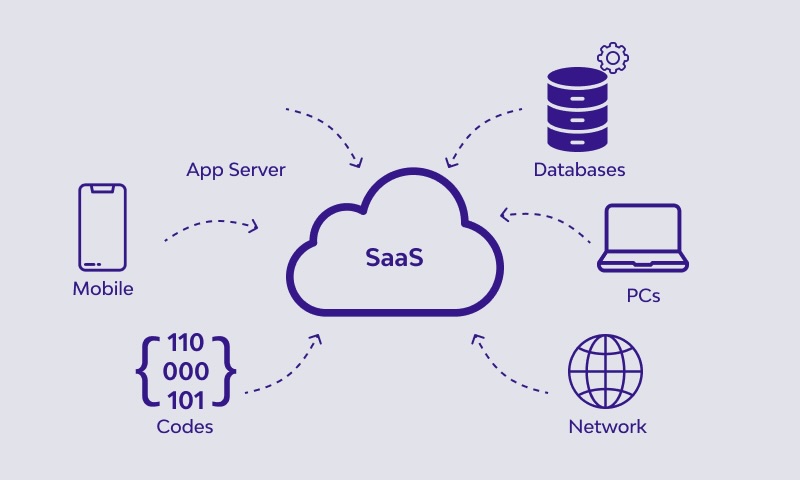Understanding CMDB and how it can streamline your workflow

Understanding Configuration Management Database (CMDB) and How It Can Streamline Your Workflow In the world of information technology, managing complex systems and maintaining accurate records of assets, configurations, and relationships can be a daunting task. This is where a Configuration Management Database (CMDB) comes to the rescue. In this article, we’ll dive into the concept of CMDB, its benefits, and how it helps organizations streamline operations and increase productivity. Back to basics: What is a Configuration Management Database (CMDB)? A Configuration Management Database (CMDB) is a centralized repository containing information about an organization’s IT assets, their relationships, and their configuration details. It provides a comprehensive view of all components in the IT infrastructure, including hardware, software, network devices, and applications. Benefits of CMDB 1. Improved configuration visibilityA CMDB offers a holistic view of an organization’s IT infrastructure, enabling stakeholders to understand the relationships and dependencies between assets. This visibility supports better decision-making, improved troubleshooting, and faster incident resolution. 2. Efficient change managementWith a CMDB, organizations can effectively track and manage changes in their IT environment. By maintaining accurate configuration records and documenting change processes, the CMDB helps minimize risks associated with unauthorized or unplanned changes, ensuring smooth transitions and reducing the impact of change-related incidents. 3. Enhanced service managementCMDB serves as the backbone of ITSM processes such as incident management, problem management, and asset management. It helps IT teams quickly identify root causes, reduce downtime, and deliver faster services, resulting in higher customer satisfaction. 4. Compliance and audit readiness CMDB plays a critical role in ensuring compliance with industry standards, regulations, and internal policies. It allows organizations to track and manage IT assets, software licenses, and configuration baselines -facilitating audits and demonstrating adherence to security and legal requirements. A Configuration Management Database (CMDB) is a valuable asset for organizations seeking to streamline IT operations and optimize service management processes. By providing a centralized repository for configuration data, a CMDB increases visibility, improves change management, and enables effective incident resolution. Ultimately, CMDB can lead to greater efficiency, reduced downtime, improved compliance, and contribute to long-term organizational success in today’s fast-changing IT landscape.
What does ITSM mean

What does ITSM mean? IT Service Management (ITSM) is a strategic and valuable function that helps organizations effectively manage, deliver, and support IT services. With the right ITSM processes and tools, businesses can increase productivity, improve customer satisfaction, and ensure smooth operations of their IT systems. What Is IT Service Management (ITSM)?ITSM is about implementing and managing IT services in a structured and efficient way. It is a framework that helps organizations organize and deliver IT services to meet business needs and support overall goals. ITSM includes a range of processes and routines covering everything from incident management and change management to problem management and configuration management. Why Is ITSM Important? ITSM plays a crucial role in ensuring that IT services run seamlessly and that users receive the support they need. Here are some reasons why ITSM is so important: 1. Improved efficiency and productivityBy applying well-defined processes and routines, organizations can optimize IT operations and achieve higher efficiency. Incident and problem management enable fast resolution of IT-related issues, while change management minimizes disruption and risk when implementing new services or changes to existing systems. 2. More effective marketing and sales. With a strong CRM system, companies can gain a holistic view of their customers, including buying behavior, preferences, and past interactions. This information can be used to create targeted marketing campaigns and sales strategies, increasing the chances of generating more revenue. 3. Improved customer service. By gathering and storing customer data in a central system, companies can equip employees with better tools to manage customer interactions. Service teams can quickly access customer information and history, making it easier to resolve issues and answer questions. This leads to an improved customer experience and strengthens the company’s reputation as a reliable partner. </p 4. Increased efficiency and productivity. A strong CRM system can help automate routine tasks such as sending emails and reminders, freeing up employees to focus on value-creating work. It also enables better prioritization and follow-up on important tasks, boosting both productivity and efficiency. 5. Alignment with business goals. ITSM ensures that IT services are aligned with organizational needs and strategy, making IT a proactive driver of business success rather than just a support function. Ultimately, a good CRM system can give a company a competitive advantage by increasing customer satisfaction, efficiency, and productivity. By managing customer data effectively VisionFlow as an ITSM- system Better IT Service Management (ITSM) is critical for modern organizations. By using VisionFlow’s tools, businesses can optimize IT services, increase productivity, and improve customer satisfaction. With proactive management of incidents, problems, and changes, organizations can ensure stable IT operations and meet the growing demands of the digital landscape. Take the next step toward successful ITSM implementation with VisionFlow!
KCS – Why is it good?

What is KCS? Knowledge-Centered Service (KCS) is a methodology for knowledge management in customer support where the team builds and shares knowledge in real time while solving cases. When knowledge becomes part of the work itself, efficiency increases, costs decrease, and the customer experience improves.Instead of a static knowledge database, a living knowledge base emerges as employees capture solutions directly during interactions with customers.If the answer doesn’t exist, the employee first searches the knowledge base and then creates a new article if needed. In this way, the organization continuously learns and improves its support process over time. KCS – Three Core Principles 1. Integrate knowledge into the workflow. Employees write and update articles based on real cases. The knowledge becomes immediately available to colleagues and customers. 2. Use knowledge as a process indicator. By measuring article usage, you can identify gaps and increase the relevance of the knowledge base. 3. Create a learning cycle. Insights from customer interactions become improvements to the content. The team continuously refines articles so the knowledge base evolves alongside the organization. What are the benefits of KCS? KCS increases efficiency as the team reuses proven solutions and reduces duplicate work; response times are shortened and resources are freed up. The customer experience improves when more users can find answers directly in an accessible knowledge base and solve simpler problems on their own. At the same time, the culture of sharing is strengthened: employees document insights as they arise and update articles when new situations occur. The result is a knowledge base that grows, stays up to date, and drives continuous improvement of support. Summary CS makes knowledge part of the work itself, not a side task. The result is faster resolutions, higher quality, and more predictable support – with a knowledge base that reflects real customer cases and is continuously improved. Read more in our knowledge base here. Make knowledge part of the work We’d be happy to continue the conversation and show you concretely how VisionFlow can simplify your daily work. We base the demo on your workflows and show how KCS makes knowledge easy to find and reuse. Book a demo Contact us
What does SaaS mean?

What does SaaS mean? Software-as-a-Service (SaaS) is one of the most popular types of cloud-based solutions. It allows companies to purchase and use software on a subscription basis instead of buying a license for each user. What are the benefits of SaaS? SaaS is a licensing model where software is provided as a service through the cloud. Instead of purchasing software licenses to be installed on a physical computer or server, the user pays for access to the software via a subscription delivered online. This way, users can access the software from anywhere and on any device. Low startup costs: One of the biggest advantages of SaaS is the reduced need for large upfront investments. Instead of purchasing software licenses and server equipment, the user pays a monthly subscription fee. This makes it easier for small businesses to get started. Flexibility: SaaS offers greater flexibility since users can access the software from anywhere with an internet connection. This is especially useful for organizations with multiple locations or employees who travel frequently. Scalability: Because the software is delivered through the cloud, subscriptions can easily be scaled up or down depending on the company’s needs. This is useful for businesses with seasonal fluctuations or rapid growth. Automatic updates: Since the software is provided through the cloud, updates and maintenance are simple. Users don’t have to worry about installing new updates, reducing the risk of security issues. Better collaboration: Because SaaS is accessible from anywhere with an internet connection, it is easier for employees to collaborate on projects. Users can share files and work in real time, increasing productivity and efficiency. VisionFlow for case management VisionFlow works with a modular setup, meaning the system can easily be tailored to the needs of your organization. VisionFlow is an established Swedish company, founded in 2001, fully GDPR and Schrems II compliant, with all servers located in Sweden. The VisionFlow platform consists of several components and modules that can be customized to your operations. Its user-friendly design streamlines the entire workflow so you don’t have to work in multiple different systems.
CRM and VisionFlow

What Is CRM and Problem Management? CRM (Customer Relationship Management) is a strategic approach to managing the interactions between companies and their customers. It’s about building long-term, profitable relationships by managing customer data, communication, and feedback. Here are some of the most important reasons why having a strong CRM system is essential: 1. Increased customer satisfaction and loyalty. A good CRM system makes it possible for companies to better understand their customers by collecting and analyzing customer data. This allows businesses to tailor marketing campaigns and offers to customer needs. When customers feel that their preferences are considered, satisfaction and loyalty increase. 2. More effective marketing and sales. With a strong CRM system, companies can gain a holistic view of their customers, including buying behavior, preferences, and past interactions. This information can be used to create targeted marketing campaigns and sales strategies, increasing the chances of generating more revenue. 3. Improved customer service. By gathering and storing customer data in a central system, companies can equip employees with better tools to manage customer interactions. Service teams can quickly access customer information and history, making it easier to resolve issues and answer questions. This leads to an improved customer experience and strengthens the company’s reputation as a reliable partner. </p 4. Increased efficiency and productivity. A strong CRM system can help automate routine tasks such as sending emails and reminders, freeing up employees to focus on value-creating work. It also enables better prioritization and follow-up on important tasks, boosting both productivity and efficiency. 5. Better decision-making. With centralized customer data, companies can make more informed decisions about marketing, sales, and customer service. Analyzing customer data can reveal trends and patterns that lead to stronger strategies and greater success.In the end, a solid CRM system can give companies a competitive edge by increasing customer satisfaction, efficiency, and productivity. VisionFlow as a CRM systemVisionFlow is a comprehensive CRM system that provides a flexible and customizable platform for businesses of all sizes. With integrated case management features, it helps organizations streamline their customer service processes and better manage customer relationships.VisionFlow also enables teams to respond to customer inquiries quickly and effectively. In addition, it offers an extensive set of features that make it ideal for any organization’s needs. This makes VisionFlow the perfect CRM solution for companies aiming to maximize efficiency and productivity. Read more here Test VisionFlows CRM for free today!
Deviation Management with VisionFlow

Deviation Management with VisionFlow Handling deviations is important for any organization to function well. But managing deviations is not always simple. A good deviation management system benefits the organization and makes work easier for all employees. Learn more about how VisionFlow can support organizations with deviation management. What is a deviation? A deviation means that something differs from what is normal or expected, and it can arise from many different causes. Deviations can vary in severity, from something minor like a broken lamp to serious accidents. What is deviation management? Deviation management means documenting faults and shortcomings detected within an operation in order to correct the problem. The purpose is also to address issues permanently by identifying the root cause of the deviation. Working actively with deviation management should not be seen as negative, but as an opportunity for improvement. How should you work with deviation management? It is important for an organization to have clear routines for how deviations are handled. Reporting deviations is a cornerstone of systematic improvement work. All deviations should be reported, registered, investigated, and corrected. It must also be clear how deviations are handled and reported, and it should be easy to report them quickly in a deviation management system. This way, actions can be taken immediately to correct the problem or prevent the same deviation from happening again. VisionFlow as a Deviation Management System With VisionFlow, you get a deviation management system that helps your organization keep complete control of ongoing deviations, monitor progress, and stay updated as new cases are reported—so every deviation can be addressed as smoothly as possible.VisionFlow allows you to manage multiple processes in one system without switching tools, helping you save money on licenses, staff training, and operations. One of the best ways to prevent errors and find improvements is to collaborate and engage employees. In VisionFlow, communication is both location- and person-independent, with all information gathered in one place, making it easy for the entire team to resolve deviations.In addition, VisionFlow is a fully Swedish-owned company with all servers located within the EU and GDPR compliance built in, ensuring that sensitive data is always handled with the highest level of security. Read more here.
Choose the Right Case Management System – Public Sector

A modern case management system helps municipalities and public authorities handle large volumes of cases quickly and securely. When everything is gathered in a single, unified flow, duplicate work decreases, transparency increases, and citizens receive better service.
Whistleblowing systems – what applies?

Protection for whistleblowers is nothing new. There are already regulations in place that protect employees who report serious misconduct. Under current legislation, employees who report serious wrongdoing are protected from retaliation by their employer. The new Whistleblower Act means that all private organizations with at least 50 employees must implement an internal whistleblowing system. Certain public entities, all municipalities, as well as organizations in the financial sector and several government agencies, are also required to comply with the new regulations. The dedicated channels for reporting misconduct are intended to provide stronger protection for whistleblowers than before. A whistleblower’s identity must be covered by the highest level of confidentiality, meaning that their information may not be disclosed under any circumstances. The whistleblowing system as a safer solution The opportunity for safer whistleblowing paves the way for more secure anti-corruption efforts. It also requires that individuals or companies managing whistleblowing functions must be independent and impartial in relation to the organization. This places specific demands on how organizations set up their whistleblowing systems. När träder lagen i kraft? The law is proposed to take effect on December 17, 2021. Medium-sized companies are proposed to have until December 17, 2023, to implement internal reporting channels. Other organizations are proposed to have until July 17, 2022, to comply with the law. Read more at regeringen.se . Use VisionFlow as a whistleblowing system! By using VisionFlow, you get a flexible and secure whistleblowing system. VisionFlow is a platform developed and delivered by Visionera, a Swedish company established in 2001. Want to know more about how to use VisionFlow as a whistleblowing system? Don’t hesitate to contact us, we’ll help you get started! Book a demo Contact us
What Does Schrems II Mean?

What does Schrems II mean? – Why VisionFlow is a safe and smart choice for your case management On July 16, 2020, the European Court of Justice announced the Schrems II ruling, which has had extensive consequences for the use of American cloud services. Under GDPR, the transfer of personal data to a third country – that is, a country outside the EU/EEA – may only take place if the recipient country can guarantee an adequate level of protection for the data. In practice, this has proven to be highly complex, making it difficult to ensure the required level of protection. After Schrems II, there is in many cases no longer a clear legal path for processing personal data in the U.S. By choosing VisionFlow for your case management and CRM, you can rest assured. As a local Nordic provider, we comply with GDPR and ensure that data is stored within the EU. All information is handled securely, and VisionFlow offers the necessary features to help you and your organization meet GDPR requirements. With VisionFlow, you can always trust that all customer information is kept safe within Sweden’s borders. What is Schrems? C-362/14 and C-311/18 are what we today call Schrems I and II. Both are rulings from the European Court of Justice, named after Austrian lawyer and privacy activist Maximilian Schrems. Schrems challenged Facebook in Ireland, arguing that the company reserved the right to transfer his personal data to the U.S., despite the country’s mass surveillance systems conflicting with EU data protection laws. The case reached the European Court of Justice, which ruled in Schrems’ favor. The Court invalidated the agreement known as Safe Harbour, which companies had used for transatlantic data transfers. This ruling, later called Schrems I, affected not only Facebook but many other companies. Safe Harbour was replaced in 2016 with the Privacy Shield framework, which allowed digital traffic between the EU and U.S. to continue relatively unhindered. U.S. companies could register with the U.S. Department of Commerce to certify compliance. On July 16, 2020, the European Court of Justice declared that the Privacy Shield agreement did not provide sufficient protection for personal data transferred to the U.S. Schrems once again won, and the ruling became known as Schrems II. What does this mean for Swedish companies and organizations? Schrems II applies to all companies that process personal data within the EU but transfer it to a third country. It is very common to find Swedish companies using American cloud services. The Schrems II ruling states that supervisory authorities in EU member states must actively intervene against controllers who transfer personal data to third countries without legal grounds. Sweden’s privacy regulator (IMY) has already begun investigations against Swedish companies. The review is part of an EU-wide effort led by the European Data Protection Board (EDPB) task force set up to handle the complaints filed since the Schrems II ruling. What happens if you don’t comply with Schrems II? The exact consequences are still not entirely clear, since no cases have yet been decided under Schrems II. But based on previous violations of the EU’s General Data Protection Regulation, companies risk fines, sanctions, and compensation claims. Given the potentially devastating consequences for companies that are found non-compliant, it is highly relevant to review your suppliers that involve data transfers to the U.S. The key question: is it truly necessary to use this solution, or would it be safer and smarter to choose a provider that keeps data within the EU and thereby eliminates the risk of a potential ruling? Do you have questions about GDPR, Schrems II, or VisionFlow’s data management? Don’t hesitate to contact us!
Analytics Tool: Gain Full Control Over Your Data

Get a complete overview with our analytics tool The ability to analyze data is important across the entire organization. With VisionFlow, you always have access to an integrated analytics tool that lets you easily create an overview of all key aspects of your business. Review open cases, track all sales inquiries, and categorize every question so you can prioritize more effectively 📊 Categorize every case Case management and statistics help you become more productive.In our analytics tool, you can view statistics to increase the efficiency of your case management, track the number of incoming cases, and monitor how they progress. Divide cases into categories that suit your organization to create a seamless workflow. Increase productivity Stay on top of productivity and see how all cases develop. Identify bottlenecks early and resolve issues faster with a consolidated view of all open cases. Provide support and guidance to employees who get stuck on a case and improve efficiency across the entire organization at an early stage. By quickly offering customers the right solutions, you also increase customer satisfaction and build a reliable customer experience for each individual. Never miss a business opportunity! With the help of our analytics tool, you can access comprehensive statistics on incoming sales inquiries and categorize them for a clear overview of all types of requests. Never miss a new opportunity with potential customers, and ensure nothing slips through the cracks with the right statistics. Why VisionFlow VisionFlow is a Swedish-owned company with all servers located in Sweden. With us, you can feel secure about your data. When you use VisionFlow, you can trust that all information and personal data is protected in compliance with Swedish data protection legislation. Your company’s and your customers’ integrity remain within national borders and are safeguarded at the highest level. VisionFlow is a system that grows with your organization. Large or small, whatever your needs, we have a solution for you. Our system allows you to configure freely to meet your specific requirements. Our flexible platform is also one of the most cost-effective on the market. Everything shouldn’t have to cost more just to be right. With VisionFlow, you always have access to the analytics tool—without needing to purchase an additional add-on module. Curious about what we can do for you? Boka en personlig demo och upptäck möjligheterna med VisionFlow Book a demo